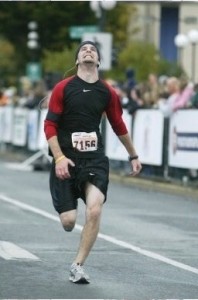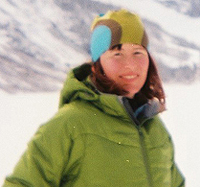Mirror, Mirror (mirror, mirror, mirror) on the wall
This week I went to the mall. Typically this isn’t a noteworthy event unless I find a great sale or have a particularly awesome Orange Julius. This trip was memorable for all the wrong reasons. The problem started when I entered the dressing room, an annex of judgement and humiliation which no woman should have to endure for at least six months postpartum (a full year is better).
Shopping for running apparel is especially problematic. Technical material, while wonderful for keeping sweat away from delicate areas never meant to fester in pools of bodily fluid, tends to emphasize every lump, bump and wobble (Side note: Doesn’t Lump, Bump & Wobble sound like the name of a great kid’s musical group?). So I knew what I was getting myself into, however as I’m still nursing my five month old, I’ve discovered my pre-baby running bras aren’t necessarily as efficient as I need them to be (imagine trying to stuff a quarter-pound hotdog into a breakfast sausage casing). If I was going to find a new one in time to test it out before my half-marathon in just over two weeks, the time had to be now.
I selected a few options, squeezed the stroller into a dressing room and began trying them on. No sooner did I have the first one on, Little Dude began to cry. Not a little whimper that slowly escalates, but rather the type of immediate, ear-shattering wail that sends passers-by scrambling for their phones to speed dial Family Services. I tried everything: a soother, rocking the stroller, covering him with my coat, outright pleading and singing a verse of Bohemian Rhapsody, but his complaint only intensified. I knew what had to be done and I had two options: get dressed, put the clothing on hold, leave and come back later, or just feed him there. I had the room and I was already topless. The math was pretty simple.
Fortunately the dressing room had a small stool so I was able sit down. Fortunately so I thought in the moment. The room also happened to come equipped with a three-way mirror on one wall, and a big, full-size mirror covering the opposite wall. I know the implications. The makers of spandex products want you to think long and hard before you dare venture out in public wearing their clothing so they make sure you can verify at every angle that this is, in fact, an appropriate purchase. Not-so fortunately, this meant that while breastfeeding, I had views multiplied as far as the eye could see and several minutes of unobstructed time with which to scrutinize myself.
Normally when I see so much skin revealed in a mirror, I’ve just gotten out of the shower and I’m standing upright and sucking things in. I’m also near the end of training for my half-marathon. Such factors had mistakenly led me to believe I wasn’t doing too badly in the post-baby body department. Fortunately, when you’re willing to pay $92 for a pair of workout pants, you get a free reality check included with purchase.
I’m still carrying an extra 10 to 15 pounds of weight I didn’t have last year during the same race, a fact that hasn’t escaped me. And while I try to remind myself that it could be much, much worse, every article I’ve ever read explaining how each extra pound of weight contributes to slower running times continues to echo in my head. I will spend the next two weeks leading up to the race reminding myself that I should be grateful to just finish the distance rather than convince myself a new PR is necessary when I’m not necessarily in top physical form. I’m still healthy, strong and hopefully ready to achieve a goal I set barely after the second pink line appeared in the test window.
Back in the dressing room, I wrapped up the feeding ten minutes later, looked down at the face of my now-peaceful son, said a silent prayer of thanks for a healthy child, proceeded to find what I originally came searching for, and vowed to start a letter-writing campaign lobbying retail locations to include at least one dressing room equipped with shoulders-up only mirrors.
Find me on Twitter @TamIWas








 Born in Nova Scotia and emigrating to British Columbia via Ontario and Alberta, Magi has been running the entire way. Primarily defined as a cross country ski racer, Magi has competed nationally and internationally in that sport. The highlight of her career was competing in the World University Games and the World Cup races in Canada in 2007. Cross country skiers rely heavily on running for cross training and Magi has become an accomplished trail and mountain runner, representing Canada at the World Mountain Running Championships in 2005 and the winning numerous national championships medals.
Born in Nova Scotia and emigrating to British Columbia via Ontario and Alberta, Magi has been running the entire way. Primarily defined as a cross country ski racer, Magi has competed nationally and internationally in that sport. The highlight of her career was competing in the World University Games and the World Cup races in Canada in 2007. Cross country skiers rely heavily on running for cross training and Magi has become an accomplished trail and mountain runner, representing Canada at the World Mountain Running Championships in 2005 and the winning numerous national championships medals.  Our Magazine
Our Magazine
